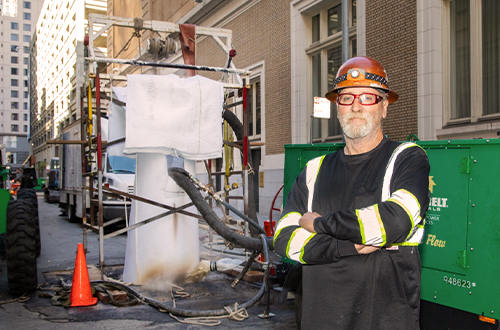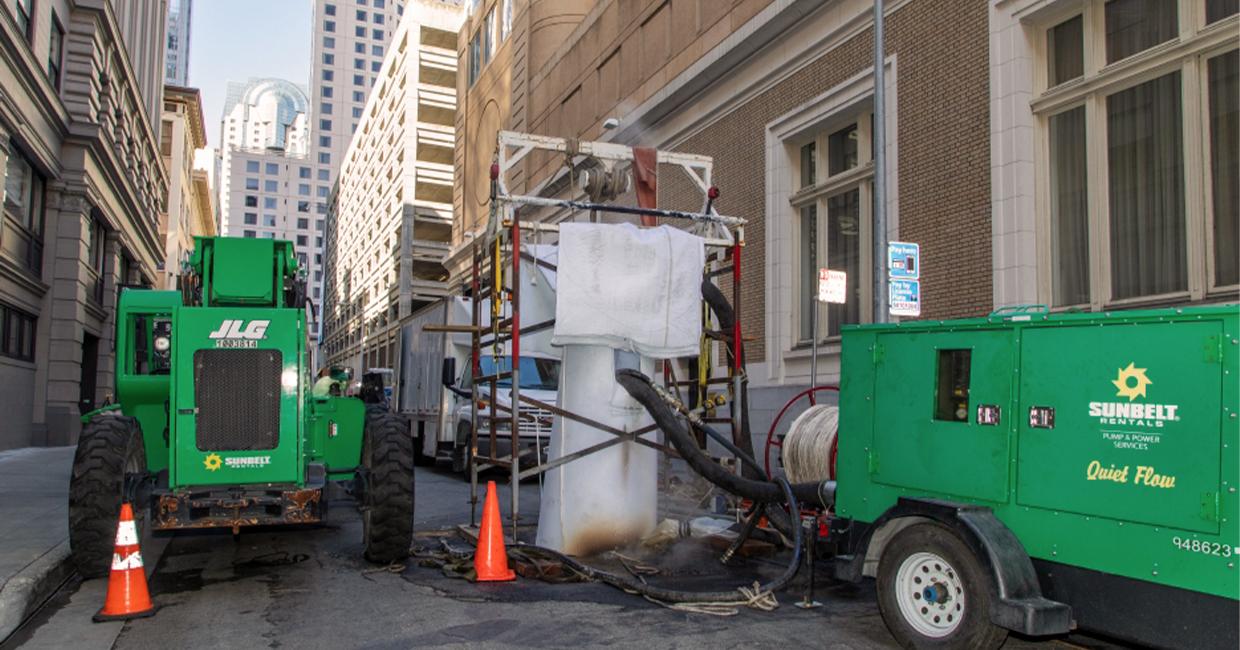Infrastructure is something many of don’t think about and take for granted. Just like turning on the water faucet and getting clean, delicious tasting water; or flushing the toilet; or charging your mobile device. When infrastructure is done right, it blends into the background. The COVID-19 pandemic highlighted how important essential workers are to the health and productivity of a community. Many of these essential workers maintain, build, or support the infrastructure systems we rely on.
In celebration of United for Infrastructure Week on May 16-20, let’s take a moment to appreciate the importance of the invisible infrastructure and the people who work tirelessly to keep it working. It is our job at the SFPUC to ensure that the water, power, and sewer infrastructure that our customers depend is reliable today and in the future -- providing the quality of life we enjoy in our beautiful city.
San Francisco’s sewer system dates back more than a century and is approaching the end of its useful life. The SFPUC helps prepare our City for the next big earthquake, climate change, and increasing intensity and frequency of storms, by maintaining and building sustainable and seismically safe infrastructures.
At the SFPUC, the Infrastructure bureau is responsible for overseeing the administration, planning, design, and construction of our water, wastewater, and power capital programs and projects, including the Water System Improvement Program (WSIP), the Sewer System Improvement Program (SSIP), the Hetch Hetchy Improvement Program (HCIP), and the annual Water and Wastewater Renewal and Replacement (R&R) Programs.
Our infrastructure colleagues work closely with other City agencies, communities, and vendors to maintain and update our infrastructure systems. Including 1,000 miles of sewer pipes and over 1,200 miles of water pipes within the City and County of San Francisco.

New Montgomery Brick Sewer Rehabilitation Project
We’ve been busy upgrading critical sewer infrastructure in the downtown area as part of the New Montgomery Brick Sewer Rehabilitation Project. This is a contribution between the SFPUC, SFMTA, SFPW and the crews of Darcy & Harty Construction.
The work was planned over the last several years and construction began in late 2021. “Improvement projects in the downtown area has many challenges and impacts the community. We went out and called up the hotels, the MOMA, and several other stakeholders in the area,” says Ming Yee, Project Manager, “and we knew early on we needed to be in close contact throughout the project.”
The work is in the busy New Montgomery area south of Market, with additional blocks of the Tenderloin added mid-project. The team benefited from lessons learned from other infrastructure projects, particularly the recently completed project along Mission Street between Cesar Chavez and 16th Street.
Efforts to reach out and notify stakeholders about the work began months before the project broke ground. The team used email, post cards and virtual meetings to explain the nature of work, duration of impacts and explored ways to reduce impacts. Planning working closely with the community to identify events, gallery shows, and other activities in the area to minimize disruption. Close coordination with the Supervisor’s Office, and the San Francisco Police Department (SFPD), and stakeholders was an important factor in keeping the work progressing.
The Large Diameter Sewer Upgrade Program, of which this project is one of several, provides the ability to use a newer technique called Cured-In-Place-Pipe (CIPP) due to the larger sewer pipe size. CIPP has already been widely and successfully used on other SSIP projects across the City. This method is less disruptive than cutting open the entire street to access and upgrade or replace the underground sewer mains. The CIPP process inserts a synthetic liner into a sewer main from one manhole to another, and then cures the liner with hot water or steam for 36 to 72 hours. This curing hardens the liner to essentially form a new pipe within the existing, strengthening it and extending the useful life another 50-75 years. See photos below of examples of the current work in downtown San Francisco.
The use of the Cured-in-Place-Pipe method combined with extensive and ongoing outreach is helping us upgrade critical infrastructure effectively and efficiently.
At the SFPUC, every week is Infrastructure Week, with projects underway citywide.
If you are interested in learning more about the progress of SFPUC’s other infrastructure projects, please visit https://sfpuc.org/construction-contracts/construction-projects.


